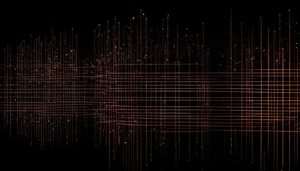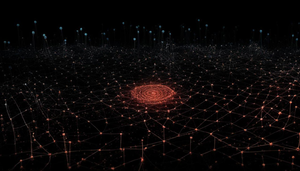Dimensionality Reduction: Principal Component Analysis (PCA)

Principal Component Analysis (PCA) is a popular dimensionality reduction technique used in machine learning and data analysis. It helps in simplifying complex datasets by reducing the number of variables while retaining important information. By transforming the original features into a new set of orthogonal variables called principal components, PCA enables us to visualize high-dimensional data, remove noise, and improve model performance.
Key Concepts:
Dimensionality Reduction: PCA addresses the curse of dimensionality by projecting data points onto a lower-dimensional subspace while preserving as much variance as possible.
Principal Components: These are the new axes obtained through PCA that capture the directions with maximum variance in the data. The first principal component explains the most variance, followed by second, third, and so on.
How PCA Works:
Centering: The mean is subtracted from each feature to center the data around zero.
Covariance Matrix: Calculate the covariance matrix which represents how features vary together.
Eigendecomposition: Find eigenvectors and eigenvalues of the covariance matrix. Eigenvectors represent directions along which data vary, while eigenvalues quantify their magnitude.
Selection of Principal Components: Sort eigenvectors based on eigenvalues to choose principal components.
Projection: Transform original features onto selected principal components to obtain lower-dimensional representation of data.
Applications:
Visualization: Reduced dimensions allow easy visualization of complex datasets.
Noise Reduction: Removing irrelevant features can enhance model performance and interpretability.
Feature Engineering: Extract meaningful patterns for downstream tasks like clustering or classification.
Considerations:
Choose appropriate number of principal components balancing between explained variance and computational efficiency.
Standardize/normalize data before applying PCA to ensure equal importance across features.
Interpret results carefully as interpreting individual principal components may not always be straightforward.
Overall, PCA is a powerful tool for managing high-dimensional datasets effectively, uncovering hidden structures within them, and improving various machine learning tasks.
Sponsored
Sponsored
Sponsored
Explore More:

Model Evaluation and Selection
Topic model evaluation and selection are crucial steps in the process of building...

Feature Engineering
Feature engineering is the process of selecting, creating, and transforming features (inputs) in...

Natural Language Processing (NLP)
Natural Language Processing (NLP) is a subfield of artificial intelligence that focuses on...

Neural Networks and Deep Learning
Neural networks are a class of algorithms modeled after the human brain's neural...

Reinforcement Learning
Reinforcement learning is a branch of machine learning concerned with how intelligent agents...

Dimensionality Reduction: Autoencoders
Autoencoders are a type of artificial neural network used for learning efficient representations...

Dimensionality Reduction: Factor Analysis
Factor analysis is a powerful technique used in the field of machine learning...

Dimensionality Reduction: Independent Component Analysis (ICA)
Independent Component Analysis (ICA) is a dimensionality reduction technique commonly used in machine...

Dimensionality Reduction: t-Distributed Stochastic Neighbor Embedding (t-SNE)
Dimensionality reduction is a fundamental technique in machine learning and data visualization that...

Unsupervised Learning: Dimensionality Reduction
Unsupervised learning dimensionality reduction is a crucial concept in machine learning that deals...

Clustering: Gaussian Mixture Models
Clustering is a fundamental unsupervised learning technique used to identify inherent structures in...

Clustering: DBSCAN
DBSCAN (Density-Based Spatial Clustering of Applications with Noise) is a popular clustering algorithm...

Clustering: Hierarchical Clustering
Hierarchical clustering is a popular unsupervised machine learning technique used to group similar...

Clustering: K-Means
Clustering is an unsupervised machine learning technique that aims to partition a set...

Unsupervised Learning: Clustering
Unsupervised learning clustering is a fundamental concept in machine learning that involves identifying...

Unsupervised Learning
Unsupervised learning is a type of machine learning where the model is trained...